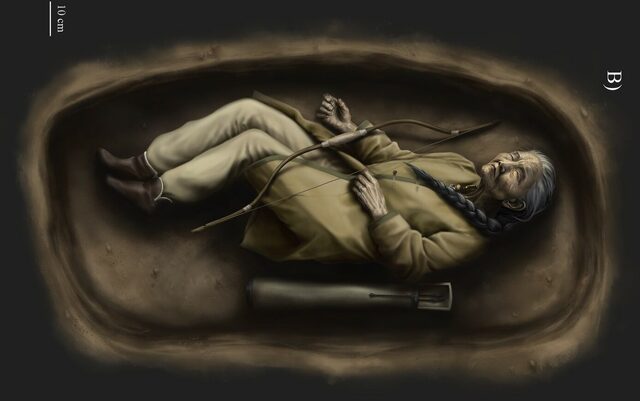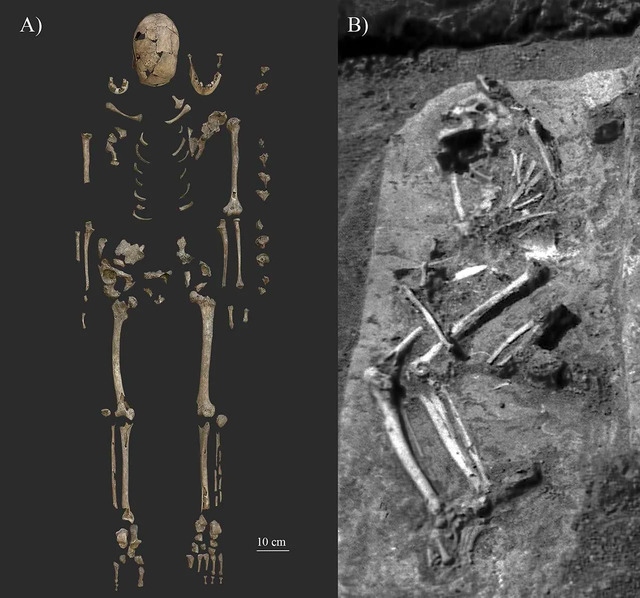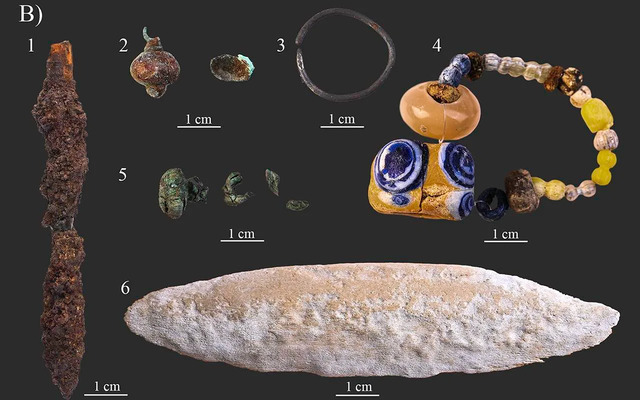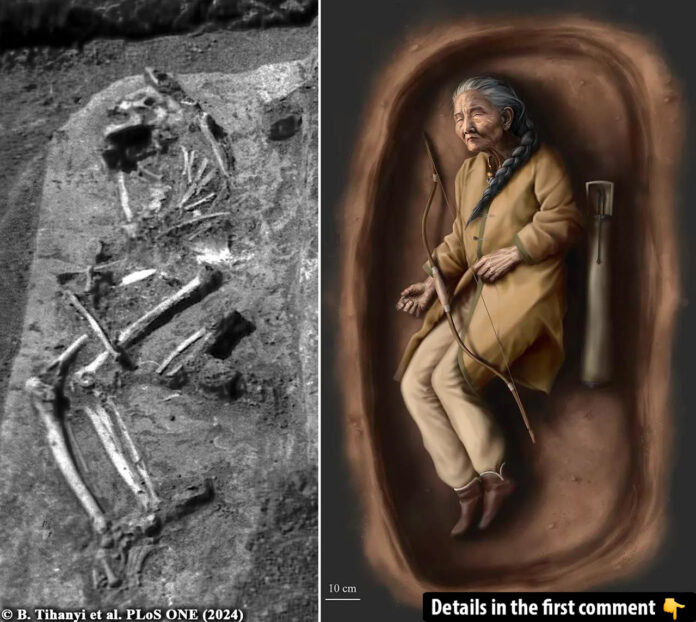In an astonishing discovery that redefines medieval history, archaeologists have unearthed the first-known burial of a woman with weapons in Hungary’s Carpathian Basin. Dating back to the 10th century, Grave No. 63 (SH-63) offers a rare glimpse into a world where gender roles and societal norms may have been more fluid than previously imagined. This groundbreaking find challenges long-held assumptions about women’s roles during the Hungarian Conquest period and sheds light on a fascinating chapter of the past.
The Sárrétudvari–Hízóföld Cemetery
The Sárrétudvari–Hízóföld Cemetery, located in eastern Hungary, dates back to the Hungarian Conquest period. This era, characterized by the migration of Magyars into the Carpathian Basin, marked the beginning of their dominance in the region. The cemetery, containing 262 graves, has been an essential site for understanding the social structures and burial customs of the time.
Historically, male burials in the cemetery were typically accompanied by weapons and equestrian equipment, symbolizing their roles as warriors. Female graves, in contrast, usually contained jewelry and household items. The discovery of SH-63, however, deviates from these norms, revealing a woman buried with weapons and archery-related artifacts, a striking departure from traditional burial practices.
Archaeologists have uncovered the first known tomb of a Warrior Woman with weapons in Hungary – watch the video to learn more about this groundbreaking discovery!
Discovery of Grave No. 63

SH-63 stands out for its inventory, which includes a mix of weapons and traditionally feminine items. Among the artifacts were an armor-piercing arrowhead, iron quiver parts, an antler bow plate, a silver penannular hair ring, three bell buttons, and a string of beads. These items, while relatively simple, are significant in their combination, blending symbols of warfare with objects of personal adornment.
The grave was initially discovered in the 1980s during excavations of the cemetery. Unfortunately, agricultural activities have since caused significant damage to the site. Despite this, recent research using advanced archaeological methods has provided valuable insights into SH-63 and the unique individual buried within it.
Determining the Identity of SH-63

Identifying the sex and potential lifestyle of the individual in SH-63 required a combination of archaeological, anthropological, and genetic analyses. Although the skeletal remains were poorly preserved, histological studies of the skull and genetic assessments confirmed that the individual was female. Additional markers, such as signs of osteoporosis, supported this conclusion.
The skeletal remains also revealed evidence of physical activity, including changes in joint morphology and multiple traumas. These indicators suggest a physically demanding lifestyle involving activities such as archery or horseback riding. However, as Dr. Tihanyi explained, “these traits do not definitively establish her as a warrior,” but they do align with activities often associated with mounted archers during the Hungarian Conquest period.
Warrior or Not?
While SH-63’s burial inventory and skeletal markers suggest a life of physical rigor, it remains unclear whether she was a warrior in the traditional sense. Women buried with weapons in earlier eras, such as the Sarmatian and Avar periods, often had only one weapon or talismanic items, which did not conclusively indicate active participation in combat.
What makes SH-63 unique is the combination of weaponry and evidence of physical activity, challenging the rigid gender roles typically associated with the period. This discovery suggests that women may have had more diverse roles in society than previously believed, potentially participating in activities such as hunting, self-defense, or even warfare.
Gender Roles in the Hungarian Conquest Period
The Hungarian Conquest period is often associated with mounted archers who played a pivotal role in shaping the region’s history. Traditional narratives have largely focused on male warriors, relegating women to domestic roles. However, the discovery of SH-63 challenges these assumptions, highlighting the possibility of greater social and gender complexity during this time.
The presence of weapons in a female grave suggests that societal roles may not have been as rigidly divided as once thought. This finding opens new avenues for exploring how women contributed to the military, economic, and cultural aspects of medieval Hungarian society.
Artifacts from Grave No. 63

The artifacts found in SH-63 offer a wealth of information about the individual’s life and the period in which she lived. The armor-piercing arrowhead and quiver parts indicate knowledge of archery, while the antler bow plate reflects the craftsmanship of the time. These items suggest a connection to mounted archery, a hallmark of the Hungarian Conquest period.
The jewelry, including a silver penannular hair ring and a string of beads, adds a personal touch to the burial. These items may have been symbols of social status or personal identity, emphasizing the duality of SH-63’s role as both a woman and a potential warrior. The bell buttons, often used as decorative elements, further highlight the blend of practicality and adornment in the grave’s inventory.
Broader Implications of the Discovery
The discovery of SH-63 has far-reaching implications for our understanding of medieval societies. By challenging traditional gender roles, this burial highlights the need for a more nuanced approach to interpreting archaeological findings. It underscores the importance of examining individual burials within their broader cultural and historical contexts.
Moreover, this find invites further research into the Sárrétudvari–Hízóföld Cemetery and other sites from the Hungarian Conquest period. Comparing SH-63 with other burials may reveal additional patterns and insights into the roles of women in this transformative era.
Conclusion
Grave No. 63 is more than just an archaeological find; it is a testament to the complexity and diversity of medieval Hungarian society. The discovery of a woman buried with weapons challenges long-held assumptions about gender roles and opens new doors for understanding the social dynamics of the 10th century.
As researchers continue to study this unique burial, SH-63 serves as a reminder that history is never static. Each discovery has the potential to reshape our understanding of the past, offering fresh perspectives on the lives and legacies of those who came before us. The story of SH-63 is not just a story of one woman but a reflection of the evolving roles and identities that have shaped human history.
